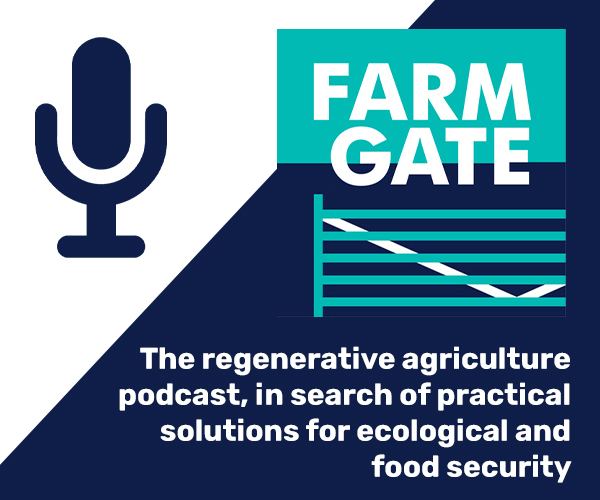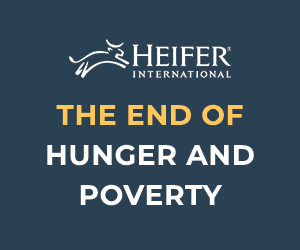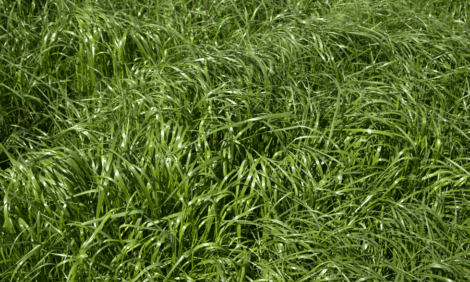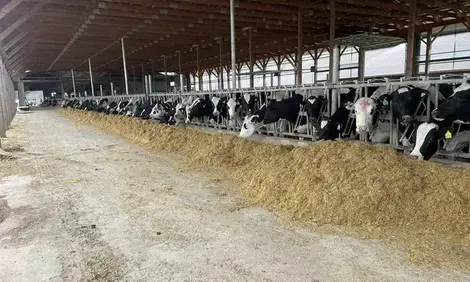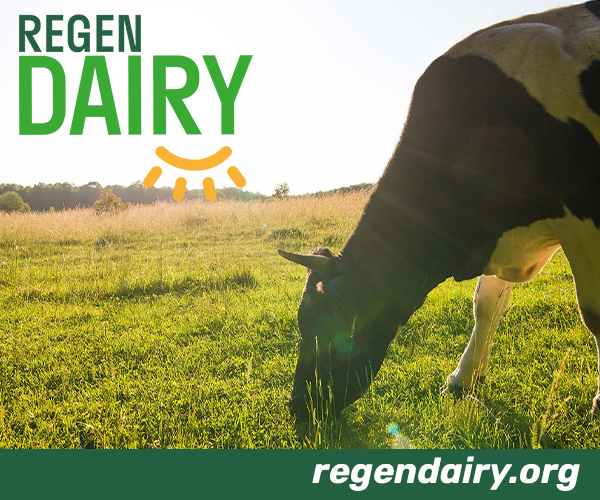



Achieving a Healthy Herd
Knowledge and prevention is how you maintain a healthy herd, say Teagasc advisers.Vaccination can prevent specific disease threats and biosecurity can reduce risk but good stockmanship comes first when establishing the status of your dairy herd.
Farmers should contact their vet if they feel at risk when buying in stock and are unsure about how to get value out of vaccines.
Introduction
Irish dairy farmers are moving into an unsupported and unrestricted market where milk production systems have to operate at optimal efficiency in order to withstand milk price fluctuations. For years now, the merits of grassland management, nutritional management, and management of fertility on dairy farms have been extensively promoted. Diseased animals perform sub-optimally and decrease on-farm efficiency and profitability through waste feed, labour and veterinary costs. Global markets are critically important to the Irish dairy industry as approximately 85 per cent of Irish dairy products are exported annually. Animal health is an important contributor to the international competitiveness of Irish dairy products, both as a result of the impact of animal disease on product quality, and because of the special importance of animal health in international trade. Ireland needs to move towards on-farm health planning as a means of maintaining market share, as well as improving productivity and competitiveness.
Herd health programmes employ a combination of biosecurity, vaccination and diagnostics to determine the health status of a herd. The health profile of a dairy herd will determine its success in terms of milk production, reproductive status and growth rates, i.e. the key aspects in a successful dairying operation. Biosecurity practices are now becoming substantial components of modern farming and as all herds are impacted by infectious disease, all are likely to benefit from the preparation and implementation of a biosecurity/ herd health plan.
At a national level, Animal Health Ireland (AHI) is providing a framework to improve Ireland’s herd health status through science-based, consensus-driven advice and recommendations. Teagasc research and advisory staff are currently actively engaged in AHI Technical Working Groups dealing with biosecurity, BVD, calf health, IBR, Johne’s disease, mastitis and parasitic diseases.
Components of a herd health plan
Herd Health Plans should be kept simple, realistic, and achievable. Base them on the combined knowledge of both you and your vet with regard to the disease status of your farm and your locality.
At a minimum a herd health plan should consist of a written plan which outlines the following;
- Whether animals (including bulls and young calves) are purchased onto the farm (open herd) or the farm is operated as a closed farm (i.e. no inward movement of cattle onto the farm).
- Whether the farm has disease-proof and secure boundaries (this assessment must include any outside farm associated with the herd).
- What contractors (if any) will come onto the farm.
- Will slurry be imported (not recommended).
- Isolation procedures for sick and dead animals.
- Cleaning schedule for housing and yards.
- Additional biocontainment procedures to be introduced or maintained around the farm, e.g. clean supplementary veterinary equipment, footbaths etc.
- Disease monitoring plan for the farm, i.e. what surveillance diagnostic testing should be carried out given the open or closed status of the farm. An example of a herd monitoring plan is included in Table 1.
- A purchasing plan if stock are to be bought onto the farm. An example of what should be included in this plan is included in Table 2.
- Vaccination plan for the farm, i.e. what diseases are present in the herd that require vaccinating against; what additional diseases the farm potentially is at risk from based on purchasing strategies and neighbouring farms. Viral and bacterial diseases that should be considered include Leptospirosis, Salmonellosis, IBR, Clostridial diseases (e.g. blackleg), Rotavirus/Coronavirus, E. coli, BVD. An example of a herd vaccination plan is included in Table 3.
- Dosing plan for the farm, i.e. what diseases are present in the herd that require dosing against; what additional diseases the farm potentially is at risk from based on purchasing strategies and neighbouring farms. Parasitic diseases that should be considered include; Liver fluke, lungworm (hoose), gutworms, cryptosporidium, coccidiosis (an example is included in Table 3).
Herd health plan to achieve a healthy
There are three key steps in a veterinary herd health plan: 1) know your herd health status, 2) prevent disease introduction, 3) prevent disease spread by vaccination. In addition, it is up to you to monitor your own control programme. You are in the ‘driving seat’; start the process by sitting down with your local vet and design a herd health plan together using these three simple steps to achieve a healthy herd (Figure 1).

Step 1: Investigate your herd health status
The simplest way to keep an eye on your herd health status is to herd your stock regularly for clinical signs of disease and to use your local vet to diagnose problems at an early stage. In addition, there are now new diagnostic tests that allow economical screening of herds using:
- Bulk milk testing (BVD, fluke, IBR, leptospirosis, neosporosis, salmonellosis, worms).
- Individual milk testing (BVD, IBR, leptospirosis, Johne’s neosporosis, salmonellosis).
- Targeted blood sampling of weanlings (BVD, leptospirosis)
- Ear-notch testing (BVD).
These test methods can be used to give a starting point from which to decide, in conjunction with the clinical herd history, what to do next, e.g. the implementation of biosecurity and or vaccination protocols, what tests you need to do on bought-in cattle and which animals to cull based on test results. If you are using ‘distance diagnostics’ (test results and advice independent of your local vet) it is advisable to discuss this information with your local vet. Samples collected as part of a herd health plan in conjunction with your local vet provide the vital interpretation of the results specific to your herd health history. Table 1 shows an example of a disease monitoring plan for a farm.
| Table 1. Example of a disease monitoring programme for a herd | ||||
|---|---|---|---|---|
| Disease | Sample | Schedule | Vet informed of result (Yes or No) | Action Required |
| BVD | Ear-notch | Within 7 days of birth | Yes | All results negative. No immediate action required |
| BVD | Ear-notch | Within 7 days of birth | Yes | One virus positive reported. Re-test required. |
| BVD | Bulk milk | Quarterly | Yes | High level of exposure indicated. Discuss whole herd testing with vet. |
| IBR | Bulk milk | Quarterly | Yes | No IBR exposure indicated. Maintain high level of biosecurity. |
| Johnes | Individual milk or blood | Over 90 days post-TB test | Yes | Two ELISA positives detected. Get vet to take dung sample from both. |
| Liver fluke | Bulk milk | Quarterly | Yes | High positive results in August. Need to dose on housing |
Step 2: Prevent introduction of disease
With herd sizes likely to increase in the phased lead up to quota abolition, bought-in stock will become a major source of disease transmission. Currently, nine out of ten dairy farmers carry out no additional routine herd health screening when buying-in cattle. Biosecurity in its simplest form means the implementation of measures to prevent the introduction and spread of infectious diseases:
- A closed herd policy (i.e. no cattle movement, including bulls, onto the farm) will prevent the direct transmission of disease onto a farm. Ireland is currently one of the few EU Bluetongue disease-free countries; importation threatens this.
- Testing of bought-in stock should include more than TB and brucellosis. Diseases such as BVD, IBR, Johne’s and Neospora should be tested. The most dangerous animal is the pregnant animal as the feotus may be infected and the dam test-negative (‘Trojan animals’); the calf needs to be tested also. Non-pregnant, non-lactating cattle bought over the summer are the lowest risk. An example of a stock purchasing plan is included in Table 2.
- On-farm biosecurity measures, such as quarantine, stock and disease-proof boundaries (to prevent nose-to-nose contact and breakouts/breakins) and footbaths increase protection against the introduction of infectious diseases.
| Table 2. A purchasing plan for stock purchase | |||
|---|---|---|---|
| No. | Action | How | Complete (?) |
| 1 | Establish the current disease status of your herd before purchasing dairy cattle. | Use bulk milk analysis and blood sampling of young stock | |
| 2 | Buy all cattle from a single source if possible. | Use personal contacts or auctioneers to source suitable animals | |
| 3 | Speak with the seller regarding the health history of his herd and the individual animals to be purchased including their vaccination status. | Record all information supplied in writing | |
| 4 | Clean and disinfect buildings before introduction of purchased animals. | Get veterinary advice on suitable cleaning and disinfection procedures. List of approved disinfectants on www.agriculture.gov.ie | |
| 5 | Quarantine all newly purchased cattle, i.e. isolate for at least 30 days in an area that is at least 3 m from other cattle groups, with no sharing of feed or water troughs and no mixing of dung and urine. | Purchase animals during the grazing period to allow isolated paddocks to be used as quarantine area. Do not purchase lactating stock which will require milking unless isolated milking facilities are available. | |
| 6 | Vaccinate/test new purchases for Leptospirosis. If deemed necessary, vaccinate for Salmonellosis and IBR. Note: both Leptospirosis and Salmonellosis are transmissible to humans | Use current herd status and veterinary advice on levels of Salmonellosis and IBR in your local area to decide on vaccination strategy | |
| 7 | All purchases (including bulls) should be tested for BVD virus and exposure to IBR, Leptospirosis and Johnes Disease (antibodies). If economically feasible and if the seller’s herd history suggests there may be an issue, test for Salmonella, Neospora caninum and Mycoplasma bovis. | Take a blood sample approximately three weeks after the animals arrival on farm and while they are still in quarantine. | |
| 8 | Dose all purchased animals for parasites, including lungworm and liver fluke. These parasite can also be tested for in incoming animals should your farm be negative. | Use an effective and licensed wormer and flukicide ensuring to adhere to withdrawal times. | |
| 9 | Remember that in buying an in-calf cow or heifer, you are essentially buying two animals. Test calves from newly purchased dams at birth for BVD virus. | This is now compulsory under the National BVD eradication scheme. | |
| 10 | Discuss on-going testing, vaccination and dosing strategy for infectious diseases with your vet. | ||
Step 3: Prevent spread of disease by vaccination
Vaccination programmes are best implemented where there is close veterinary involvement in the decisions: Whether to use a vaccine or not? Which vaccine to use? When to administer the doses? Vaccines should be viewed as a component of a herd health plan but not the sole means of disease prevention within a herd as is commonly the case. Over-reliance on vaccination without the backup of proper compliance, management and biosecurity can lead to real or apparent vaccine breakdown. If you find it difficult to remember when to vaccinate it is worthwhile designing with your vet a simple calendar of which month which animals need to be vaccinated on one sheet of paper and stick this up beside your farm files and in the dairy. Pick a date and stick to it. In addition, write these dates, and when you need to order product, into your diary each year. Linking vaccination dates to prominent calendar dates also helps, e.g. ‘first lepto vaccine dose for heifers on St Valentine’s Day and second dose on St Patrick’s Day’. An example of a herd vaccination plan is included in Table 3.
| Table 3. Example of vaccination and dosing plan for a herd | |||
|---|---|---|---|
| Disease | Schedule | Vet informed (Yes or No) | Product |
| Liver fluke | Dose whole herd at housing and again before calving | Yes | Albendazole (Note product milk withdrawal) |
| Liver fluke | Dose whole herd two weeks after housing | Yes | Triclabendazole (Note product milk withdrawl) |
| BVD | 1st March for cows and bull(s) 1st February and 1st March for heifers (Breeding start date is 1st April) | Yes | Bovilis BVD or Bovidec |
| IBR | 6 January and 6 June Check product for booster requirements for primary vaccination | Yes | Zoetis products MSD products Hipra product |
| Salmonella | 15 August for cows and bulls 22 July and 15 August for heifers | Yes | Bovivac S |
| Etc. | |||
Monitor your control programme
Once you have decided to implement a control programme through a herd health plan you need to check that it is working year after year. You can do this by:
- Routine herding of stock to pick up early signs of disease.
- Monitoring of records to detect changes in performance.
- Testing/treating bought-in stock and
- Use of screening tests to detect a change in herd health status.
In addition to monitoring for disease you need to monitor the control programme itself, e.g. has the timing of your vaccination programme drifted over the years?
Disease specific information
Brief notes on a number of relevant disease to Irish dairy farms are included below including a prioritised list of measures to be implemented for prevention and control which can be used to develop your herd health plan.
Leptospirosis
Leptospirosis is a bacterial disease of cattle. It can also result in life-threatening disease in humans. A leptosprial infection can be transmitted from one animal to the next through direct contact with infected urine/water, milk or placental fluids. Infected animals often show no signs of infection but harbour the bacteria in their kidneys, shedding them intermittently into the environment. Some wildlife species (e.g. rats) also shed leptospires in urine making avoidance difficult. Transmission via semen is possible but uncommon.
Clinical Signs
- Decreased reproductive efficiency (infertility).
- Decreased milk production (milk drop syndrome).
- Abortion sometimes with retention of afterbirth.
- Stillbirths and weak calves.
- Septicaemia (blood poisoning).
Control in your herd using
- Vaccination.
- Selective treatment with high dose antibiotics.
- Rodent control.
- Fencing of wet ground and streams.
- Keeping housing clean and disinfected.
- Designing and implementing a biosecurity plan including diagnostic testing.
Infectious bovine rhinotracheitiis (IBR) (see www.animalhealthireland.ie)
IBR is a highly contagious viral disease of cattle caused by Bovine Herpes Virus 1 (BHV-1) Direct animal contact is the most efficient method of IBR virus transmission. Stress reactivates infections in carrier animals. Nasal discharges from infected animals will contain large amount of virus. Indirect transmission can also occur although of lower risk.
Clinical Signs
- Initial outbreak
- Sudden milk drop and high fever.
- Nasal discharge – red, crusty nose.
- Sore and cloudy eyes.
- Severe pneumonia due to secondary bacterial infections.
- Abortions in the second half of pregnancy.
- Increase in calf pneumonia.
Repeat outbreak (less severe)
- Occasional abortions in second half of pregnancy.
- Pneumonia.
Eliminate from your herd by
- Vaccinating with a live vaccine in the face of an outbreak.
- Continuing to vaccinate at six-monthly intervals (note change to Zoetis inactivated vaccine which allows annual booster interval).
- Testing to establish the level of carriers in the herd.
- Culling carriers out of the herd when economically feasible.
- Designing and implementing a biosecurity plan including diagnostic testing.
Bovine viral diarrhoea (BVD) (see www.animalhealthireland.ie)
BVD is a highly contagious viral disease of cattle caused by Bovine Viral Diarrhoea virus (BVDv). Direct animal contact is the most efficient method of BVD virus transmission. Both transient and persistently infected animals will shed virus particles in all bodily secretions, such as nasal and oral discharges, tears, milk and semen. Persistently infected animals shed significantly higher levels of virus that transiently infected animals. Indirect transmission by contaminated housing, veterinary equipment and farm visitors can also occur although of lower risk.
Clinical Signs
- Poor fertility (conception rates), having ruled out other causes.
- Poor calf health, i.e. unprecedented or undeserved level of calf scour and/or pneumonia.
- Increased number of abortions, stillbirths and/or deformities.
- Birth of weak calves.
- Occurrence of severe acute BVD.
- Occurrence of fatal mucosal disease (only possible in persistently infected animals).
Eliminate from your herd by
- Testing for and removing persistently infected animals (National BVD Eradication Scheme). Also note AHI supplementary advice on applied additional BVD testing on your farm should positive animals be identified (www.animalhealthireland.ie).
- Designing and implementing a biosecurity plan.
- Vaccinating.
Johnes disease (Paratuberculosis) (see www.animalhealthireland.ie)
Johnes Disease or Paratuberculosis is a bacterial disease of cattle caused by Mycobacterium avium subspecies paratuberculosis. This bacterium is shed in faeces by infected animals. Young calves are most at risk of infection and become infected when exposed to infected dung, particularly when nursing from an udder contaminated with infected faeces or from ingestion of infected colostrum and/or milk. M. avium subspecies paratuberculosis can also cross the placenta; however the most common route of infection is through ingestion of the mycobacterium. An apparently normal animal can silently shed mycobacteria in the herd. This bacterium remains viable in the environment for lengthy periods (> 1 year).
Clinical signs
- Chronic, eventually fatal, weight loss in cows despite treatment.
- Progressive wasting despite a good appetite.
- Persistent and severe diarrhoea.
- Clinical signs rarely seen in animals less than two years of age.
Control in your herd by:
- Immediately isolating and culling of infected animals.
- Continuous testing to identify high-risk animals, which should be culled if/when economically feasible.
- Implementing a calf management system to avoid infection i.e.
- separate newborn calves from all adult animals immediately after birth until at least 12 months of age and preferably until two years of age.
- feed colostrum from cows either negative or low-risk for Johnes.
- rear calves on milk replacer until weaned.
- Maintaining a clean and disinfected environment in order to reduce faecal contamination, especially in calf housing and on equipment coming into contact with calves. An approved disinfectant should be used.
- Designing and implementing a biosecurity plan including diagnostic testing.
Fascioliasis (liver fluke) (see www.animalhealthireland.ie)
Liver fluke is parasitic disease of cattle, sheep and humans caused by Fasciola hepatica. Liver fluke eggs are shed in pasture, move through a number of developmental stages which includes a second snail host and are then ingested by other individuals. The larvae subsequently develop with immature and mature fluke residing in the liver of infected individuals. Both immature and mature flukes cause significant liver damage leading to both obvious clinical signs and sub-optimal production in infected cattle. Wetter farms tend to be at increased risk although a dry farm is no guarantee against a fluke infestation.
Clinical signs
- Chronic sub-optimal production.
- Bottle jaw.
- Anaemia.
- Poor coat.
- Lack of appetitie.
Control in your herd by:
- Testing herd or individuals to establish herd status.
- Dosing using an appropriate product at an appropriate time of year (usually over the dry period in Irish dairy cows).
- Minimising access to areas of snail habitat (muddy areas).
- Designing and implementing a biosecurity plan including diagnostic testing.
October 2013




